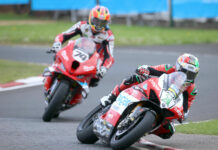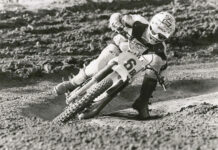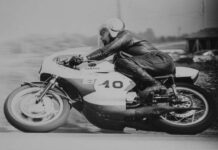IRVINE, Calif., May 7, 2009 – The Motorcycle Safety Foundation’s mission is to make the nation’s streets and highways safer for motorcyclists through rider training programs, operator licensing programs, and public information campaigns. While these priorities continue year-round, May is designated Motorcycle Awareness Month, which provides the MSF an additional opportunity to enhance drivers’ awareness of motorcyclists who share the road with them just as the spring riding season kicks off. “It’s a fact that car drivers and other motorists are at fault most of the time in multiple-vehicle crashes that involve a motorcyclist,” said Motorcycle Safety President Tim Buche. “That’s why we’ve initiated several public outreach tools specifically targeting the driving community. MSF has life-saving messages for everyone, whether they are behind a handlebar or behind a steering wheel.” MSF launched a new website, forcardrivers.com in 2007, with safety tips, video instruction, and other resources to help car, truck, and bus drivers learn how to safely interact with motorcyclists on the nation’s streets and highways. MSF offers these timely guidelines from forcardrivers.com: 10 Things Car, Truck, and Bus Drivers Should Know about Motorcycles 1. Over half of all fatal motorcycle crashes involve another vehicle. Most of the time, the motorist, not the motorcyclist, is at fault. There are a lot more cars and trucks than motorcycles on the road, and some drivers don’t “recognize” a motorcycle – they ignore it (usually unintentionally). 2. Because of its small size, a motorcycle can be easily hidden in a car’s blind spots (door/roof pillars) or masked by objects or backgrounds outside a car (bushes, fences, bridges, etc). Take an extra moment to look for motorcycles, whether you’re changing lanes or turning at intersections. 3. A motorcycle may look farther away than it is. It may also be difficult to judge a motorcycle’s speed. When checking traffic to turn at an intersection or into (or out of) a driveway, predict a motorcycle is closer than it looks. 4. Motorcyclists often slow by downshifting or merely rolling off the throttle, thus not activating the brake light. Allow more following distance, say three or four seconds. At intersections, predict a motorcyclist may slow down without visual warning. 5. Motorcyclists often adjust position within a lane to be seen more easily and to minimize the effects of road debris, passing vehicles, and wind. Understand that motorcyclists adjust lane position for a purpose, not to be reckless or show off or to allow you to share the lane with them. 6. Turn signals on a motorcycle usually are not self-canceling, thus some riders (especially beginners) sometimes forget to turn them off after a turn or lane change. Make sure a motorcycle’s signal is for real. 7. Maneuverability is one of a motorcycle’s better characteristics, especially at slower speeds and with good road conditions, but don’t expect a motorcyclist to always be able to dodge out of the way. 8. Stopping distance for motorcycles is nearly the same as for cars, but slippery pavement makes stopping quickly difficult. Allow more following distance behind a motorcycle because it can’t always stop “on a dime.” 9. When a motorcycle is in motion, see more than the motorcycle – see the person under the helmet, who could be your friend, neighbor, or relative. 10. If a driver crashes into a motorcyclist, bicyclist, or pedestrian and causes serious injury, the driver would likely never forgive himself/herself. Since 1973, the Motorcycle Safety Foundation has set internationally recognized standards that promote the safety of motorcyclists with rider education courses, operator licensing tests, and public information programs. The MSF works with the federal government, state agencies, the military, and others to offer training for all skill levels so riders can enjoy a lifetime of safe, responsible motorcycling. The MSF is a not-for-profit organization sponsored by BMW, BRP, Ducati, Harley-Davidson, Honda, Kawasaki, KTM, Piaggio, Suzuki, Triumph, Victory and Yamaha. For RiderCourseSM locations, call 800.446.9227 or visit www.msf-usa.org. More, from another press release issued by Motorcycle Safety Foundation: MSF Cautions Car, Truck, and Bus Drivers: Don’t be Driven to Distraction Offers Five Key Messages for Sharing the Road IRVINE, Calif., May 7, 2009 – Just days ago, a bus driver was caught on video texting for six minutes before crashing into a sports utility vehicle that had stopped in traffic. The driver of the SUV suffered neck injuries, but luckily no one was killed due to the bus driver’s negligence. (“video” links to
MSF: 10 Things Drivers Should Know About Motorcycles
MSF: 10 Things Drivers Should Know About Motorcycles
© 2009, Roadracing World Publishing, Inc.






